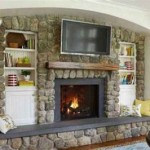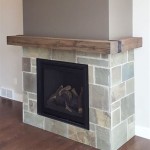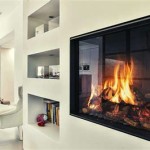Family Room Design: Reimagining TV Placement Without the Fireplace Focus
The conventional wisdom of placing a television above a fireplace in a family room is increasingly being re-evaluated. While visually appealing to some, this arrangement often presents ergonomic and practical challenges. Concerns regarding neck strain from elevated viewing angles, potential heat damage to the television, and limitations in furniture arrangement are driving homeowners and designers to explore alternative layouts.
This article examines the considerations involved in designing a family room with a television positioned separately from the fireplace. It will explore design principles, potential layouts, and practical considerations for achieving a comfortable and aesthetically pleasing space.
Ergonomics and Viewing Comfort
One of the primary reasons to reconsider placing a television above a fireplace is the impact on viewing comfort. The ideal viewing angle is typically considered to be at or slightly below eye level when seated. Mounting a television high above a fireplace necessitates tilting the head upwards for extended periods, potentially leading to neck strain, discomfort, and even long-term health problems. This is particularly problematic for individuals with pre-existing neck issues or those who spend significant amounts of time watching television. The degree of discomfort is directly related to the height of the television and the distance of the seating from the screen.
Professional ergonomic guidelines are often overlooked when prioritizing aesthetics. The placement of the television should be determined by the height of the seating and the typical eye level of the occupants. In most cases, this will require a lower mounting height than is typically associated with a fireplace installation. Wall mounting the television eliminates the need for furniture and allows for positioning at precisely the right height for comfortable viewing. This is especially helpful in families with children or elderly individuals who may have differing needs.
Furthermore, the size of the television relative to the viewing distance significantly affects comfort. A larger screen viewed from too close can also cause eye strain. Careful consideration of the room dimensions and seating arrangement is crucial to ensuring an optimal viewing experience.
Alternative Placement Strategies
Several alternative placement strategies allow for separating the television and fireplace while creating a balanced and functional family room. One common approach is to position the television on an adjacent wall to the fireplace. This creates two distinct focal points, allowing each element to command attention without competing for prominence. The fireplace can then serve as a purely aesthetic feature, while the television is optimized for viewing comfort.
Another option involves creating a media wall. This involves incorporating the television into a larger built-in unit that also includes shelving, storage cabinets, and potentially even the fireplace itself, albeit positioned separately. The media wall can be designed to conceal the television when not in use, further enhancing the room's aesthetic appeal. Careful planning is essential to ensure that the media wall is scaled appropriately to the room's size and style.
For rooms with limited wall space, a corner placement for the television might be considered. This can be a practical solution for maximizing space and creating a more intimate seating arrangement. However, corner placement requires careful consideration of viewing angles and furniture placement to avoid distortion or discomfort.
Freestanding cabinets or consoles can also be utilized to house the television. This offers flexibility in terms of placement and can be easily adjusted as needed. It also provides additional storage space for media equipment and accessories. The style of the cabinet should complement the overall décor of the room.
Heat Management and Equipment Considerations
Placing a television above a fireplace can expose it to excessive heat, potentially damaging sensitive electronic components. Modern televisions are generally designed to operate within a specific temperature range, and prolonged exposure to high temperatures can shorten their lifespan or even cause irreversible damage. While some fireplaces may have built-in heat shields, these may not be sufficient to fully protect the television, especially during extended use.
Even if the television is not directly above the fireplace, radiant heat can still be a concern. Ensuring adequate ventilation around the television is crucial to prevent overheating. This may involve leaving sufficient space between the television and the surrounding walls or using fans to circulate air. Regular cleaning of the television's vents can also help to prevent dust buildup, which can further impede airflow.
In addition to heat, the placement of the television must also accommodate the wiring and connections associated with it. Power outlets, cable boxes, gaming consoles, and other media equipment require access to appropriate connections. Careful planning is essential to conceal these wires and prevent them from becoming a visual distraction. This may involve running wires through the walls or using cable management systems. Integrating these elements into the overall design of the room is essential for a clean and uncluttered appearance.
Furthermore, the size and weight of the television must be taken into account when determining the appropriate mounting hardware. Wall mounts should be securely anchored to the wall studs to prevent the television from falling. It is always best to consult with a professional installer to ensure that the television is mounted safely and securely.
Furniture Arrangement and Room Flow
When the television is not automatically placed above the fireplace, it opens up new possibilities for furniture arrangement. The seating arrangement is no longer dictated by the fixed position of the television and fireplace combination. This allows for a more flexible and customized design that prioritizes comfort and conversation.
Consider the pathways through the room and ensure that furniture does not obstruct the flow of traffic. A well-planned furniture arrangement should create a sense of openness and allow for easy movement. The positioning of sofas, chairs, and tables should be carefully considered to optimize both viewing comfort and social interaction. The focal length must be considered, creating distance from the screen for less eye strain.
The placement of area rugs can also help to define different zones within the room. A rug placed under the seating area can create a cozy and inviting space for watching television or socializing. The rug should be large enough to accommodate all of the furniture in the seating area, with the front legs of the sofas and chairs resting on the rug.
Lighting is another important consideration. Avoid placing lamps or other light sources directly behind the television, as this can create glare and make it difficult to see the screen. Instead, use ambient lighting to create a soft and inviting atmosphere. Dimmable lights are a good option, as they allow you to adjust the brightness to suit the mood.
The selection of accessories and décor should complement the overall design of the room. Avoid cluttering the space with too many items. Instead, focus on a few carefully chosen pieces that add visual interest and personality. Artwork, plants, and decorative objects can all help to create a warm and inviting atmosphere.
Balancing Aesthetics and Functionality
Ultimately, the goal of designing a family room with a television that is not over the fireplace is to strike a balance between aesthetics and functionality. The room should be visually appealing and comfortable, while also serving its intended purpose as a space for relaxation and entertainment. This requires careful planning and attention to detail.
Consider the overall style of the home and choose furniture and décor that complements it. The color palette should be cohesive and create a sense of harmony. Avoid using too many contrasting colors, as this can be visually jarring. Instead, focus on a few key colors and use them consistently throughout the room.
The layout of the room should be both practical and aesthetically pleasing. Consider the flow of traffic and ensure that furniture does not obstruct the pathways. The seating arrangement should be comfortable and conducive to conversation. And the television should be positioned at a comfortable viewing height.
By carefully considering these factors, it is possible to create a family room that is both beautiful and functional. The absence of a television above the fireplace can actually enhance the room's design, allowing for a more creative and personalized space. This approach can lead to a more comfortable, ergonomic, and visually appealing family room that meets the specific needs of the household.

Stop Hanging Your Television Over Fireplace

Tv And Fireplace In One Room Find The Perfectly Happy Spot For That Black Beast Form Design Tasteful Interiors Living Well

Things That Inspire The Tv Dilemma Over Fireplace

Stunning Fireplace Design With Integrated Tv

Don T Put A Tv Over The Fireplace Richard Taylor Architects Residential Ohio

Putting A Tv Above The Fireplace May Not Be Such Bad Idea After All

Ask The Decorologist Where To Put Tv

Stop Hanging Your Television Over Fireplace

Tv And Fireplace In One Room Find The Perfectly Happy Spot For That Black Beast Form Design Tasteful Interiors Living Well

Where To Put A Tv In Room With Fireplace Mr Handyman
Related Posts








